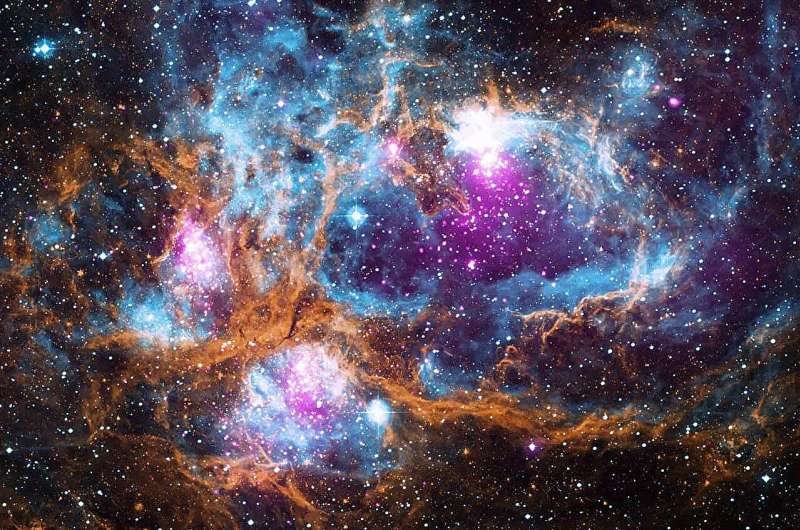This article has been reviewed according to Science X's editorial process and policies. Editors have highlighted the following attributes while ensuring the content's credibility:
fact-checked
trusted source
proofread
A 'cosmic glitch' in gravity: New model may explain strange behavior on a cosmic scale

A group of researchers at the University of Waterloo and the University of British Columbia have discovered a potential "cosmic glitch" in the universe's gravity, explaining its strange behavior on a cosmic scale.
The paper is published in the Journal of Cosmology and Astroparticle Physics.
For the last 100 years, physicists have relied upon Albert Einstein's theory of "general relativity" to explain how gravity works throughout the universe. General relativity, proven accurate by countless tests and observations, suggests that gravity impacts not simply three physical dimensions but also a fourth dimension: time.
"This model of gravity has been essential for everything from theorizing the Big Bang to photographing black holes," said Robin Wen, the lead author on the project and a recent Waterloo Mathematical Physics graduate.
"But when we try to understand gravity on a cosmic scale, at the scale of galaxy clusters and beyond, we encounter apparent inconsistencies with the predictions of general relativity. It's almost as if gravity itself stops perfectly matching Einstein's theory. We are calling this inconsistency a 'cosmic glitch': gravity becomes around one percent weaker when dealing with distances in the billions of light years."
For more than twenty years, physicists and astronomers have been trying to create a mathematical model that explains the apparent inconsistencies of the theory of general relativity. Many of those efforts have taken place at Waterloo, which has a long history of cutting-edge gravitational research resulting from ongoing interdisciplinary collaboration between applied mathematicians and astrophysicists.
"Almost a century ago, astronomers discovered that our universe is expanding," said Niayesh Afshordi, a professor of astrophysics at the University of Waterloo and researcher at the Perimeter Institute.
"The farther away galaxies are, the faster they are moving, to the point that they seem to be moving at nearly the speed of light, the maximum allowed by Einstein's theory. Our finding suggests that, on those very scales, Einstein's theory may also be insufficient."
The research team's new model of a "cosmic glitch" modifies and extends Einstein's mathematical formulas in a way that resolves the inconsistency of some of the cosmological measurements without affecting existing successful uses of general relativity.
"Think of it as being like a footnote to Einstein's theory," Wen said. "Once you reach a cosmic scale, terms and conditions apply."
"This new model might just be the first clue in a cosmic puzzle we are starting to solve across space and time," Afshordi said.
More information: Robin Y. Wen et al, A cosmic glitch in gravity, Journal of Cosmology and Astroparticle Physics (2024). DOI: 10.1088/1475-7516/2024/03/045
Provided by University of Waterloo





















